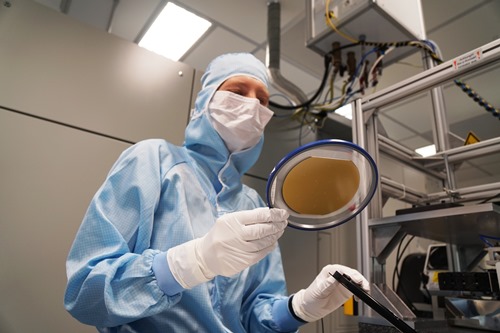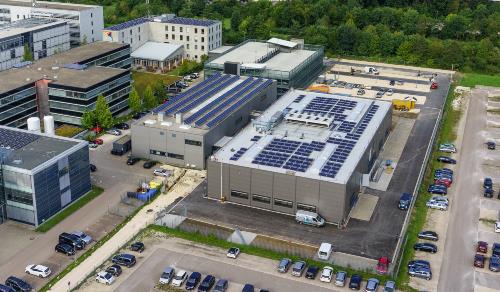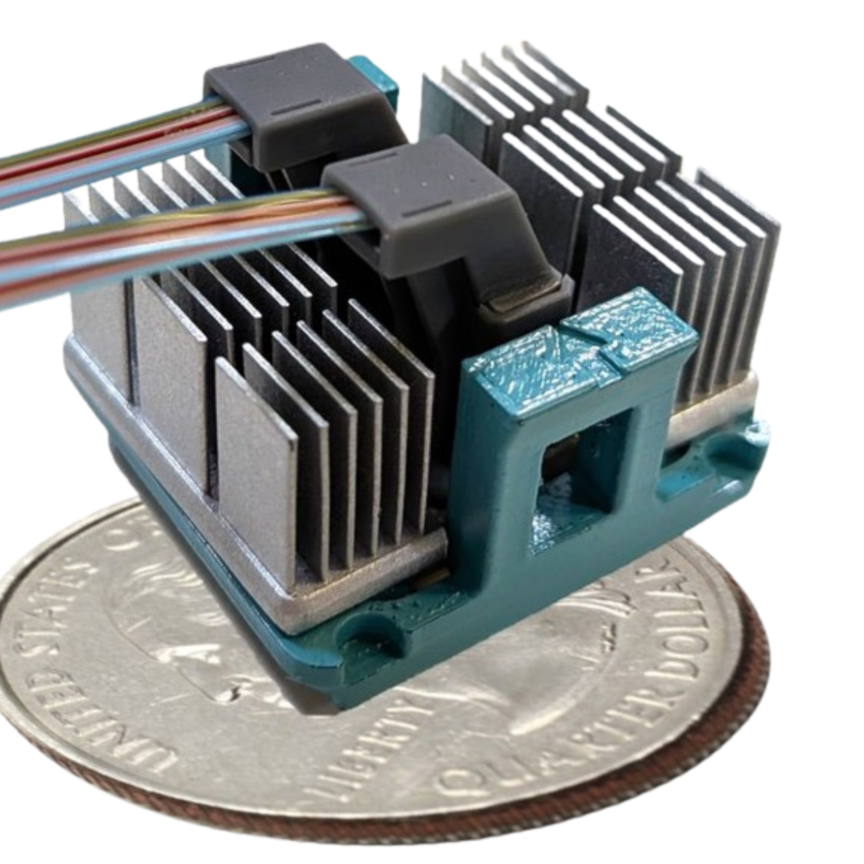Despite having already been around for more than 40 years, VCSELs are still in the beginning of their life cycle. However, the technology is set to reach its full potential in the new future, writes Dr Joseph Pankert, general manager at Philips Photonics
It’s been over a decade since I started working with vertical-cavity surface-emitting laser (VCSEL) technology. At that time, the basic invention was already 30 years old, and the first commercial applications were more than 10 years old. Yet, despite this, the full potential of the technology is only really coming to fruition now.
To put that into perspective, global revenues for the VCSEL market currently stand at $700 million, and are expected to swell to above $1 billion in 2022. If you were to ask me why that is, I would tell you that VCSELs have been waiting for the ‘digital revolution’.
Let me explain. The digital revolution constitutes a huge amount of data transmission from one device to another. If we consider the technologies equipped to cope with this, VCSEL emitters are unmatched in terms of energy, volume or cost per transferred bit. The digital revolution also means real world objects interfacing via sensors with the digital domain. VCSELs enable many classes of optical sensors, with unmatched performance and cost.
Finally, the digital revolution applies to numerous industrial applications, with production processes becoming increasingly digital. VCSELs support this with sensors, but also specific components for plastic processing or surface treatment.
What exactly is a VCSEL?
A VCSEL is a (micro-) laser that is monochromatic, coherent, and has a beam shape that conveniently couples into optical fibres. The small cavity also allows for fast modulation, thereby lending itself well to high-speed data transmission.
However, the one outstanding additional property that sets VCSEL technology apart from any other laser is its compatibility with the flows of electronics manufacturing. VCSELs are processed and tested on wafer scale, and conveniently integrate into printed circuit boards just like almost any other electronics component. This has enabled a supply chain for high volume devices such as time-of-flight sensors or optical transceivers with unmatched price points.
Where are we with VCSEL adoption today?
If we think about the current penetration of VCSELs into the digital technology markets, it really is across the board. Mobile devices and industry products increasingly use sensors to scan the environment and interact with other objects, and many of these sensors are optical sensors that rely on sophisticated light sources. VCSELs can provide this – in many cases better than other light sources, like LEDs or edge emitting lasers.
Nowadays, hundreds of millions of smart phones are using VCSELs for either proximity sensing or autofocus assist. Most data centres use VCSELs for fibre interconnects, and an increasing number of industrial sensors are using VCSELs for position and speed sensing. However, this is only the beginning.

What is the future potential of the technology?
Despite the initial headway, for now, the vast majority of smart phones and interconnects are not yet using VCSEL technology, although forecasted performance and cost roadmaps make an almost compelling case for very high penetration in a few years from now.
Secondly, we have seen a number of new VCSEL-enabled applications on the horizon that will add an entirely new dimension to VCSEL usage. These include things like 3D mapping to support AR/VR and identification; 3D printing and surface finishing; high power devices using millions of VCSELs that may radically change the way we process plastics; and using VCSEL arrays as a light source for lidar, which would be a key enabler for autonomous driving.
The third reason is more of a vision than a reality, and is what I call ‘integration’. Today, most VCSELs are designed to fulfill a single purpose, which is emitting light with a certain power level, wavelength and so on. Collimation or diffusing optics, as well as driver circuits, are externally connected to the VCSEL to define the entire function. Wafer level processing, however, allows a more integrated approach of which we have seen the first examples already: Datacom VCSELs often come as multi-channel chips (4x, 12x or higher).
Moreover, we have seen optical elements for mode control or polarisation control integrated right into the GaAs chip, and we have seen devices that have lasers and photo diodes all on the same chip.
All of this bears the promise of a kind of ‘Moore’s law for VCSELs’, where we can expect to see more and more functions integrated on a single chip. Nobody knows which new applications will benefit from integration, and what drives the progress of integration. But I am sure there are plenty of ideas out there waiting for VCSELs to take the next step in their ongoing evolution.
A lasting impact on European manufacturing
While we expect the growth of 3D sensing in smart phones to be a major driver, we are also seeing increased demand from industrial applications, and eventually, we will see demand rise from automotive as well, but this could take a few years.

Following the announcement last year that Philips was expanding and doubling the capacity of its laser diode facility in Ulm (on track for completion by the end of the year), Philips has produced a cumulative 700 Million VCSELs. This fast growth in demand has triggered follow-up investments that will lead to another doubling of capacity by early 2018. Image: Philips Photonics
In the future, we expect VCSELs to grow on a global scale. Europe in particular is likely to emerge as one of the strongest regions in adopting VCSELs in industrial and automotive products, as these are traditionally strong European industries.
Despite having already been around for over 40 years, VCSELs are still in the beginning of their life cycle. There are many more innovations to come, and these changes will have a deep and lasting impact on many digital applications and thereby all of our lives.
- If you would like to find out more about Philip's work with VCSELs, you can read more at www.photonics.philips.com/about


